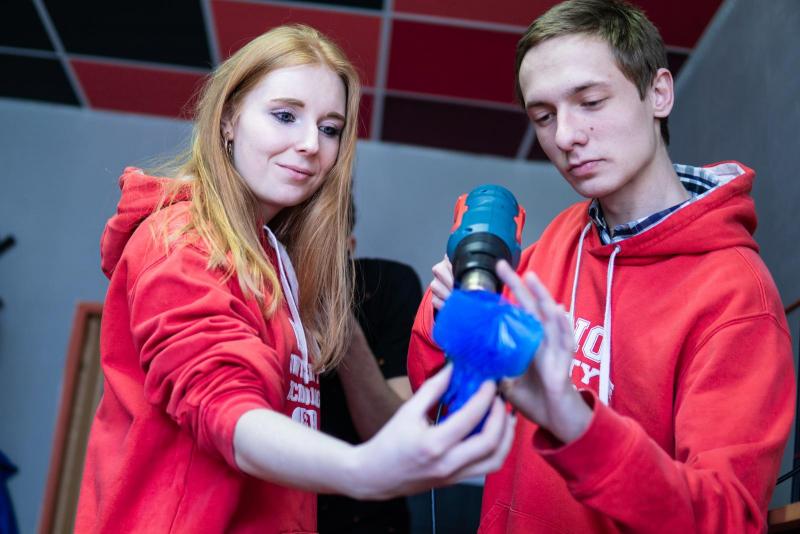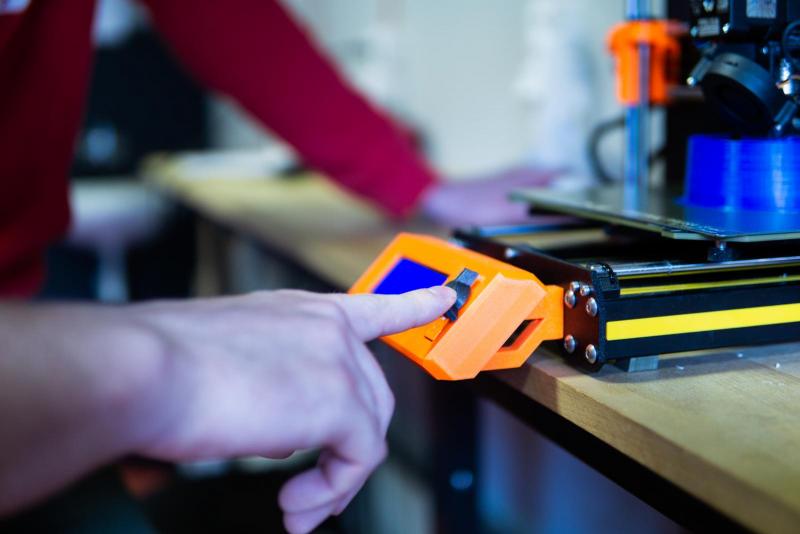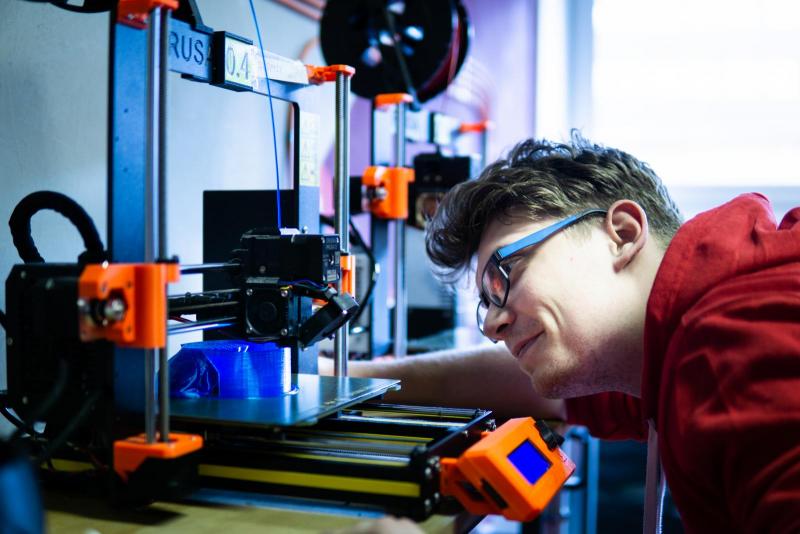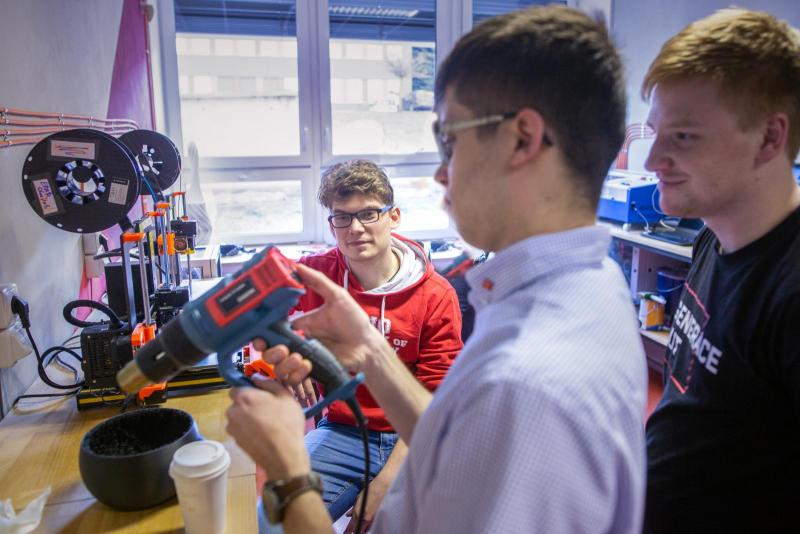Topic
Challenge as a lifestyle: strojLAB connects students and fields of study across BUT

Enthusiasm and considerable ambition. That is the way to describe the student team that brings together students from all over BUT under the name of strojLAB. The renewed brand with a completely new crew is now finishing a self-built milling machine, repairing a model tram for the Technical Museum in Brno and planning to reach the bottom of the Hranice Abyss. Moreover, strojLAB is not only a team, but also a student workshop, where all students and staff of BUT can come with their ideas after training.
3D printers, 3D scanner, laser. The strojLAB workshop is equipped with the essentials that every enthusiastic “maker” may need. After a hiatus when the workshop was temporarily out of operation, it reopened last year to staff and students and their ideas. Behind the reopening of the workshop is a group that has transformed into a student team of the same name: strojLAB.
“We try to distinguish between users and members. The members are in the team, the users are in the workshop,” explains Jan Kalina, one of the so-called “drivers”, i.e. people who manage the workshop and take care of its operation. Anyone can use it; all they need to do is to undergo training on the relevant machine and gain access to an employee card or ISIC. According to statistics, 230 active users used the workshop in the last academic year and more users are signing up. Roughly half of them are from the Faculty of Mechanical Engineering, where the workshop is located, and the other half from other faculties of the BUT.
“A scale model of Židenice was printed here, or perhaps the furnishings of a church. People come with different ideas and projects. Students from different disciplines meet here, new links and ideas are formed, it is an inspiring environment,” Kalina adds. Members of the student team are trying to arrange access to more advanced laboratories of the BUT. That's where they want to work on what they enjoy most: projects that challenge them.
The milling machine with a gentle name

During a visit to the Technical Museum in Brno, they noticed a model tram that was marked as out of order in the technical playroom. The students offered the museum to try to resurrect the tram modelled by Vladimír Gabzdyl, who worked on the model for an incredible 17 years. “It has covered more than six thousand kilometres in the museum, but now its engine has broken down. We've been given the confidence and loan of one chassis and we'll see if we can do something about it,” says Kalina.
Reaching for the bottom

“We acknowledge that it is quite a challenge,” says Tomáš Svoboda with a smile, who has taken charge of the coordination of individual projects in the team. The team divided the construction of the submarine into several phases. So far they are working on modelling and theoretical preparation. During this academic year, they would like to develop a reduced prototype whose key features can be tested in the pool. Then would come a full-size prototype equipped with sensors and other modules for testing, for example, at the Brno dam, and only in the last stage a dive into the abyss itself. How much the students can lean into the development depends on the funding they are now raising in competitions and from sponsors.

It is already certain that chemists will participate in the team, represented by Jan Hanák, a student of the Faculty of Chemistry. He took charge of the module for various analyses of the dark waters of the Hranice Abyss. “The abyss is a very inhospitable environment, high pressure and temperature, extreme pH. We would like to map the pH profile, maybe we will also come across some extremophile organisms,” Hanák looks forward to it. Speaking of extremophilic organisms, they are said to be associated in the strojLAB team at BUT. Let's keep our fingers crossed!
(ivu)
ARGO underwater: Prototype of student submarine on display at IDET Fair
Women from BUT who move the world of science and technology
Bone tissue carriers from 3D printer make bone regeneration more effective. Their formulations are being tested at FCH BUT
Chickens with their heads in the clouds
Doctoral students in engineering study the behaviour of the circulatory system. Neural networks also help them